From ‘plantation to nation’ — the legacy of land and liberty
Emancipation Day in Guyana is celebrated each year on August 1 and commemorates the abolition of slavery in 1834. It is a time when Guyanese reflect on the trials and tribulations faced by the enslaved Africans at the hands of their British masters. The enslaved Africans were either bought or captured from African countries.
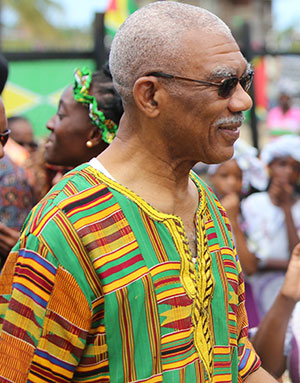 During the journey from their homelands to Guyana and other parts of the Caribbean, the slaves were packed together like sardines and many of them died of illness or chose death by jumping into the Atlantic Ocean. This journey was referred to as the Middle Passage. The transatlantic slave trade was responsible for the forced migration of between 12 and 15 million people from Africa to the Western Hemisphere from the middle of the 15th Century to the end of the 19th Century.
During the journey from their homelands to Guyana and other parts of the Caribbean, the slaves were packed together like sardines and many of them died of illness or chose death by jumping into the Atlantic Ocean. This journey was referred to as the Middle Passage. The transatlantic slave trade was responsible for the forced migration of between 12 and 15 million people from Africa to the Western Hemisphere from the middle of the 15th Century to the end of the 19th Century.
On Emancipation Day, many Guyanese regardless of ethnicity and cultural backgrounds converge at the National Park in the capital city, as the African Cultural and Development Association (ACDA) hosts its annual cultural extravaganza showcasing traditional dances, songs, poems and other tributes dedicated to the ancestors. Across the country, particularly in Berbice soirees and cultural and spiritual events are also enjoyed by many.
However, amidst the frolic there is a deeper meaning to Emancipation, particularly in Guyana and President David Granger, this year called on all Guyanese to follow in the footsteps of their fore parents, who not only struggled for their freedom, but endeavoured to set a strong foundation for those to follow. When slavery was abolished in 1834, 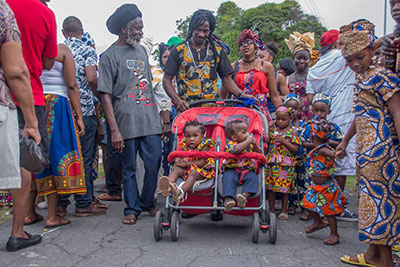 Guyana’s economy and social structure underwent significant changes. Many former slaves left the plantations and populated villages outside the capital city, starting what is known as the Village Movement, which started in 1839 and eventually led to the ‘political movement’ for civil rights and constitutional change, and to the ‘labour movement’ for the improvement of conditions of work in both urban and rural areas. The event sent the nation in a new direction and also led to greater cultural diversity exemplifying the national motto: “One People, One Nation, and One Destiny.”
Guyana’s economy and social structure underwent significant changes. Many former slaves left the plantations and populated villages outside the capital city, starting what is known as the Village Movement, which started in 1839 and eventually led to the ‘political movement’ for civil rights and constitutional change, and to the ‘labour movement’ for the improvement of conditions of work in both urban and rural areas. The event sent the nation in a new direction and also led to greater cultural diversity exemplifying the national motto: “One People, One Nation, and One Destiny.”
Speaking at the Sunrise Worship Breakfast at the Glory Light Tabernacle on August 1, 2017, in one of the villages bought by freed Africans, Plaisance on the East Coast of Demerara, the President deemed this movement as the transformation from “plantation to 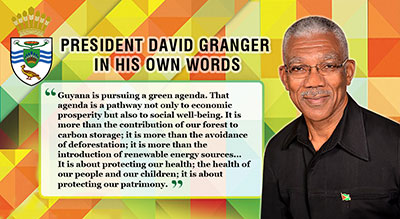 nation.” In 1842, a group of 65 freed Africans pooled their monies together and bought 300 acres of land in that community. These Africans, like many others, had saved money that they had earned from over-time work over the years and since much of the money they had saved was in the form of coins, the payment had to be transported in wheel-barrows to the sellers. This, the Guyanese Head of State pointed out, was achieved despite of the lack of education among the ancestors, therefore with the resources available today; much more can be accomplished by their predecessors.
nation.” In 1842, a group of 65 freed Africans pooled their monies together and bought 300 acres of land in that community. These Africans, like many others, had saved money that they had earned from over-time work over the years and since much of the money they had saved was in the form of coins, the payment had to be transported in wheel-barrows to the sellers. This, the Guyanese Head of State pointed out, was achieved despite of the lack of education among the ancestors, therefore with the resources available today; much more can be accomplished by their predecessors.

President Granger urged Guyanese to use this as an example to improve livelihood for themselves and families. He reminded that during slavery, the Africans had no family structure, but once freed they ensured that they laid the foundation to secure enabling stable environment for their children to thrive. Home, food, church and school were the four pillars that constituted these communities developed by the African ancestors.
Under the plantation system, the President said the Africans were treated as property, 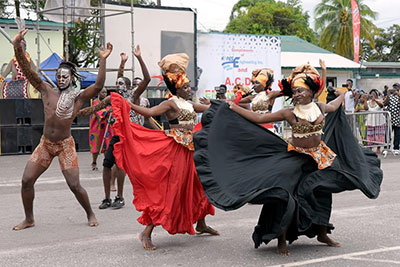 therefore
therefore
“The first thing they did when they got their freedom, was to acquire these villages some they could build real homes…where there women and their children could live together… the second thing they thought about was about their farms, they had to get food…they ate what they grew and they grew what they ate. So these villages were important sources of food. The third thing they did was to build their own churches because it was the Congregational churches that helped to educate them more than any other church and kept them together during the period of enslavement and after enslavement… And the fourth of course was the school, because they wanted their children to read, write, count and spell.”
Importantly, the President said it could not have been easy for the freed Africans, coming out of a system such as slavery to save and buy all these villages, all within the first decade of Emancipation. “Let
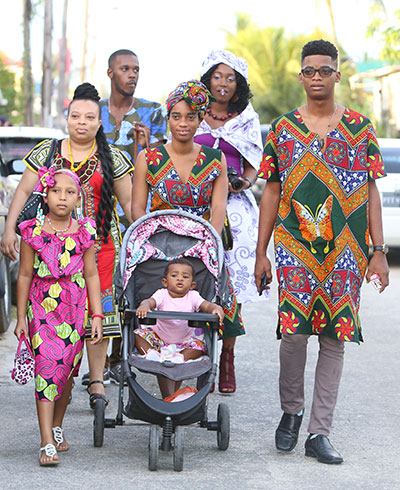
us preserve our homes, let us preserve our schools and let us preserve our farms so that we can have a happy life in the land that our fore parents purchased with the blood, sweat and tears,” the Head of State said. Freedom was seen as an instrument for the Africans to make their children and grandchildren happy and have access to the resources they were unable to acquire during those centuries of captivity.
Speaking to a large crowd at the Gibraltar-Fyrish Primary school, during the Mega Emancipation celebrations this year, President Granger said, “Over the years, your fore parents were able to produce ground provision, fruits and coconuts and they made these villages into the food bowl of the Corentyne. In fact, when the Black Bush Polder was opened they were able to get planting materials from Gibraltar and Leeds… These villages were purpose-built…
There was an aim to create a settled peasantry.” Sitting on about 500 acres of land, Gibraltar was one of the biggest villages purchased 175 years ago during the said Village Movement. It was bought a mere four years after the end of slavery by 20 freed Africans at 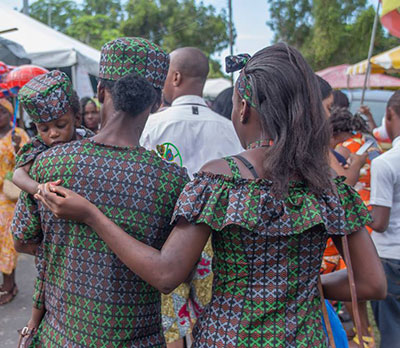 the cost of $4,383. The fact that in the decade after Emancipation, freed Africans were able to buy 15,000 acres of land in cash, attest to their visionary thinking. “This was an economic miracle… In the whole western hemisphere there was no movement like the Village Movement of British Guiana at the time in which thousands of people were able to move off of the plantations… We today are the beneficiaries of the miraculous Village Movement. What a people our forefathers were! They gave us the greatest legacy of all, land to build churches, homes, schools and farms,” he said.
the cost of $4,383. The fact that in the decade after Emancipation, freed Africans were able to buy 15,000 acres of land in cash, attest to their visionary thinking. “This was an economic miracle… In the whole western hemisphere there was no movement like the Village Movement of British Guiana at the time in which thousands of people were able to move off of the plantations… We today are the beneficiaries of the miraculous Village Movement. What a people our forefathers were! They gave us the greatest legacy of all, land to build churches, homes, schools and farms,” he said.
While the freed Africans had already endured the worst crime against humanity, once emancipated, the Plantation owners, after recognising their resilience and drive to build these communities and provide the basic necessities for their families, did all that was possible to frustrate the Movement. They increased the cost for the plantation lands and even forced the Africans to accept meagre wages and prohibited them from fishing in the 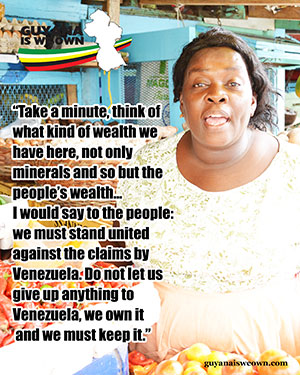 canals and committed other acts designed to keep the Africans working for them. Allowances for food and medicines were discontinued; their fruit trees chopped down and farm animals were killed in the vile attempt to keep these Africans under their control, but these tactics failed.
canals and committed other acts designed to keep the Africans working for them. Allowances for food and medicines were discontinued; their fruit trees chopped down and farm animals were killed in the vile attempt to keep these Africans under their control, but these tactics failed.
The strong-willed Africans continued to persevere. The spirit of entrepreneurship was evident among the freed Africans and according to Guyana’s history, by 1839, Africans purchased plantations of Lichfield, Golden Grove, St. John and Providence in West Berbice. Lichfield was bought by one person, Cudjoe Mc Pherson and later divided into 12 sections which he sold to other Africans for a profit. Beterverwagting on the East Coast of Demerara was bought by 61 Africans. New Orange Nassau, an 800-acre plantation renamed Buxton in honour of Thomas Buxton who championed the cause of Emancipation in the British Parliament, was purchased by 128 persons for $50,000 in 1840. In 1841, another group paid $80,000 for Plantation Friendship, located next to Buxton.
Portions of estates were also sold to African labourers, for instance on the Essequibo Coast, the owners of Dageraad, Mocha and Westfield divided the front lands into lots and sold them for $100 to $200 each. A thriving village of Africans soon developed in that area and was named Queenstown in honour of Queen Victoria. Similarly, the front lands of Plantation Aberdeen were divided and sold to Africans who established the village of Williamstown. The purchasing of lands by Africans continued until 1852. By that time, Africans had established 25 villages on lands purchased for over one million dollars.
As history has recorded, even though slavery was abolished, the Africans still had many struggles as the colonisers sought to control this freedom. Many struggles continued even after, but despite these challenges the relationships were forged and the different ethnic groups continued to strive to transform Guyana’s landscape. The President has stressed over the years that Emancipation must be used to bridge gaps and to foster freedom in every sense. Through Emancipation Guyana has been blessed with a diverse population from different racial groups in which all members are endowed with unique talents, skills and cultural heritages, which must be unified for nation-building.












